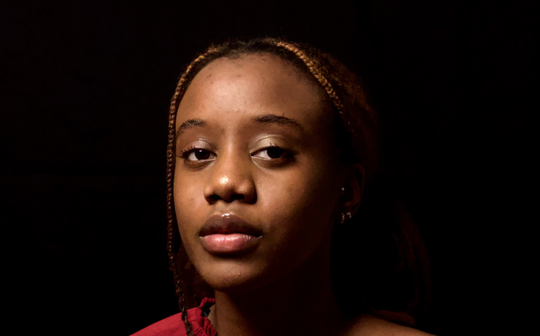Cartoon Network’s “The Powerpuff Girls” is a childhood staple loved by many. While Bubbles, Blossom and Buttercup are iconic characters in their own right, it was their lineup of notorious villains that excited me. Most sinister among them is the villain: HIM.
Described as a flamboyant devil with aliases like “The Evilest of Evil” and “The King of Darkness,” HIM is said to be the Girls’ most perilous foe.
HIM was the earliest memory I have of a queer-coded character. His appearance was androgynous with effeminate leanings. He wore a red mini dress with pink clouds at the hem of his skirt and neckline, framing his pointy ears and wicked grin. The pink and bubbly hem of the fit matched the blush on his high cheeks. Thigh-high stiletto boots topped off his pointy ensemble.
He moved in a way I can only describe as dainty and graceful, almost ballet-esque, and had a sickeningly sweet, high-pitched voice. His mouth moved but it sounded like it echoed in the chambers of your mind.
He was the stuff of nightmares. But how could a character so glamorous be so evil?
His goal was to sow seeds of conflict by way of psychological warfare. His methods of subversion were insidious, and when his plots manifested into physical takeovers, the screen color would shift to an ominous red filter, matching the devilish red of his skin — something apocalyptic.
There is a lot that can be said about the tendency for media to queer-code their villains with homophobic undertones and all, but I digress.
It goes without saying that categorically queer representation has heightened since then. Still, media that isn’t tokenizing or fetishizing queerness continues to be a rarity. If queer pain wasn’t being exploited, the queer characters were often present for comedic relief. Whether they were being laughed at or laughed with, it didn’t matter.
Tides are thankfully shifting and some evidence of this can be seen in the works of Neil Gaiman. In the film adaptation of Gaiman’s Stardust, the formidable Captain Shakespeare was characterized as a closeted gentle drag queen.
Captain Shakespeare and his crew had the reputation of being the most gruesome and murderous of all sky pirates: the picture of hard masculinity. Despite his crossdressing, Shakespeare’s crew knew all about it. What’s more, they didn’t care and loved him, nonetheless.
Gaiman’s most recent screen adaptation, however, is a masterclass in representation. The Sandman, originally a DC comic, was adapted into a series by Netflix in August 2022.
The original comic was already progressive for its time, having come out in 1989. There was a sprinkling of a few queer characters, enough to cause some controversy. But not even letters from the “Concerned Mothers of America” or the many attempted movie adaptations could keep Gaiman from creating the adaptation he envisioned. And it was well worth the wait.
The series follows the character Dream/Morpheus as he traverses different realms to remedy the mayhem that resulted from his captivity.
Dream and his six siblings are known as The Endless, humanlike embodiments of the “forces of nature.”
Without getting bogged down by specific plot details, what makes this series so delectable — intricate world-building notwithstanding — is how queerness and nonconformity is made to be normative. There is no hyperfocus on gender or sexual identity. Conflicts do not occur as a consequence of or aren’t rooted in queerness. Queerness just is. And it’s marvelous.
The fallen archangel Lucifer, played by actor Gwendoline Christie, was originally typified as a man. In the series, Christie plays Lucifer as agender and androgynous.
There was a bit of uproar about this gender nonconformity because, according to some, it wasn’t true to the source material. After having watched the show, and as Gaiman himself has affirmed, Lucifer’s gender doesn’t affect any plot lines. The integrity of the story remains, but it’s just a little more expansive this way.
True to the source material, the character, Desire, was a standout performance of genderqueer magnetism.
Played by nonbinary actor Mason Alexander Park, Desire is strikingly beautiful and complex. While they live to antagonize Dream as their younger sibling, I didn’t feel any pull to characterize them as a villain.
The lore behind The Endless is too rich and expansive to ascribe absolute value judgments to any one member. Maybe I’m wrong.
Suffice to say, I’ll be looking forward to series two.






Comment policy
Comments posted to The Brown and White website are reviewed by a moderator before being approved. Incendiary speech or harassing language, including comments targeted at individuals, may be deemed unacceptable and not published. Spam and other soliciting will also be declined.
The Brown and White also reserves the right to not publish entirely anonymous comments.